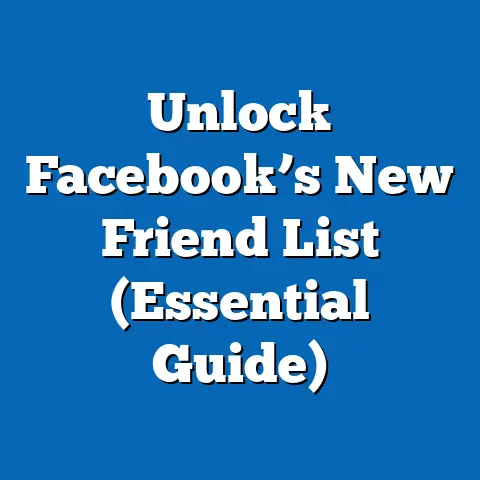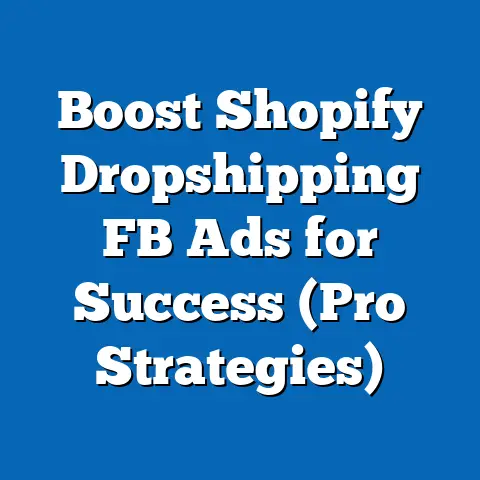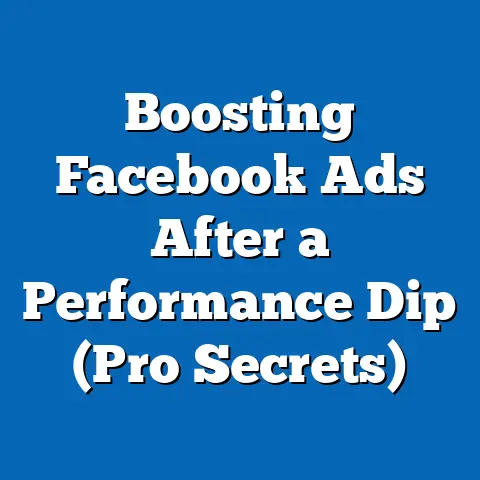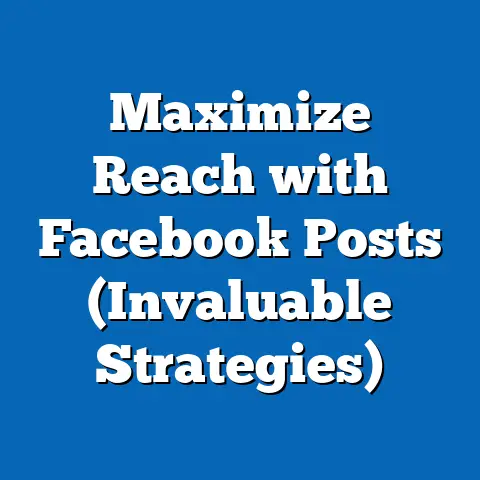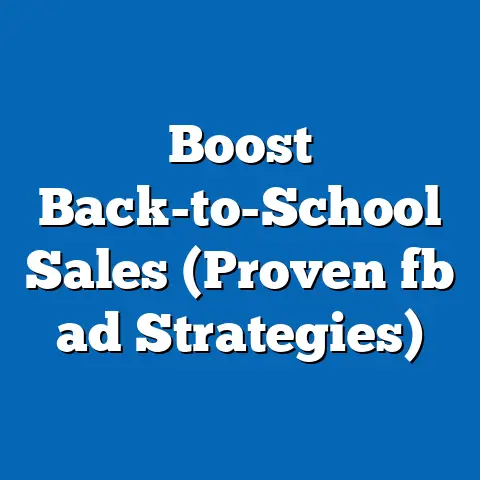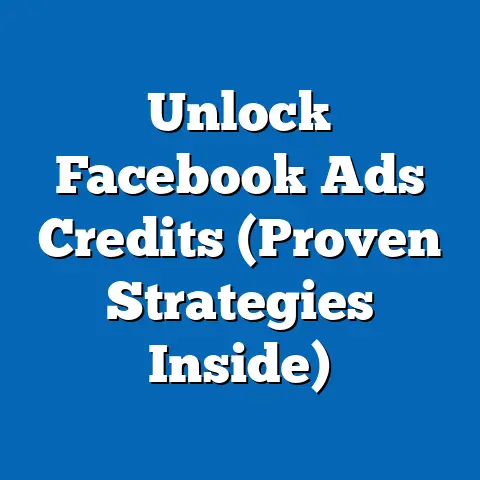Boost Baby Book Sales on Facebook (Proven Strategies)
As a digital marketing specialist and a parent myself, I understand the profound impact that early childhood reading has on a child’s development. I’ve seen firsthand how baby books can spark imagination, foster bonding, and lay the foundation for a lifelong love of learning. But let’s face it, parenting can be expensive! Finding affordable options is always top of mind, and that’s where strategic Facebook advertising comes in. It’s not just about selling books; it’s about connecting with parents who are actively seeking ways to enrich their children’s lives without breaking the bank.
Think about it: new parents are constantly bombarded with ads for diapers, formula, and baby gear. It’s a crowded marketplace, but baby books offer something unique – a chance to connect, to educate, and to create lasting memories. And in today’s digital age, parents are increasingly turning to online platforms like Facebook to discover new products and make purchasing decisions. This presents a golden opportunity for small publishers and independent authors to reach a highly targeted audience with compelling, affordable baby book options.
The key is to understand that parents aren’t just buying a book; they’re investing in their child’s future. They’re looking for value, quality, and something that will capture their little one’s attention. By crafting compelling ad content, utilizing the right Facebook ad formats, and employing effective targeting strategies, you can tap into this market and significantly boost your baby book sales.
I remember working with a small publishing house that specialized in interactive baby books. They were struggling to gain traction despite having a fantastic product. We implemented a targeted Facebook ad campaign focusing on the educational benefits of their books, highlighting the affordable price point, and showcasing the interactive elements in engaging video ads. The results were astounding – their sales skyrocketed within weeks, and they quickly established themselves as a leading provider of affordable, educational baby books.
In this guide, I’ll walk you through the proven strategies I’ve used to help businesses like that publishing house succeed on Facebook. We’ll cover everything from understanding your target audience and crafting compelling ad content to utilizing different ad formats, employing effective targeting strategies, and optimizing your campaigns for maximum ROI. So, let’s dive in and discover how you can boost your baby book sales on Facebook while making a positive impact on the lives of young children and their families.
Section 1: Understanding Your Target Audience
Knowing your audience is the bedrock of any successful marketing campaign. You can have the most beautifully designed ad and the most compelling copy, but if you’re showing it to the wrong people, it’s all for naught. When it comes to baby books, your target audience primarily consists of new parents, expectant parents, grandparents, caregivers, and anyone who plays a significant role in a young child’s life. But it’s not enough to just know who they are; you need to understand what motivates them.
Demographics and Interests
Let’s break down the demographics a bit further:
- Age: Most new parents fall within the 25-40 age range, although this can vary.
- Location: Urban and suburban areas often have a higher concentration of young families.
- Income: While affordability is a key factor, income levels can influence the types of books they purchase (e.g., board books vs. more elaborate pop-up books).
- Education: Parents with higher levels of education may be more inclined to prioritize early childhood literacy.
Now, let’s look at their interests. Think about what these individuals are likely to be searching for online:
- Parenting tips and advice
- Baby products and gear
- Early childhood education resources
- Children’s books and literacy programs
- Activities for babies and toddlers
- Discounts and deals on baby products
Understanding these demographics and interests allows you to create highly targeted Facebook ads that resonate with your ideal customer.
Emotional Drivers Behind Book Purchases
Beyond the practical considerations, there are powerful emotional drivers behind book purchases for infants. Parents often view books as:
- A bonding opportunity: Reading together creates a special connection between parent and child.
- A tool for education: Books introduce babies to new words, concepts, and ideas.
- A source of entertainment: Colorful illustrations and engaging stories can capture a baby’s attention and provide hours of amusement.
- A way to foster development: Reading helps develop language skills, cognitive abilities, and imagination.
Your ads should tap into these emotional drivers by highlighting the benefits of reading to babies and showcasing the positive impact your books can have on their development.
Gathering Data with Facebook Insights
Facebook Insights is your secret weapon for understanding your target audience. This powerful analytics tool provides a wealth of information about the people who are interacting with your Facebook page and your ads. Here’s how you can use it to gather valuable data:
- Audience Demographics: See the age, gender, location, and education level of your followers.
- Page Likes and Followers: Track the growth of your audience over time and identify trends.
- Post Engagement: Analyze which posts are generating the most likes, comments, and shares.
- Website Traffic: See how many people are visiting your website from your Facebook page.
By analyzing this data, you can gain a deeper understanding of your audience’s interests, preferences, and behaviors. This information can then be used to refine your ad targeting and create more effective ad content.
For example, I once noticed through Facebook Insights that a significant portion of the audience for a client’s baby book page were grandparents. We immediately adjusted our ad targeting to include grandparents as a primary audience segment and created ad copy that specifically addressed their desire to connect with their grandchildren through reading. This simple tweak resulted in a significant increase in sales.
Key Takeaway: Understanding your target audience is crucial for creating effective Facebook ads. Use Facebook Insights and other analytics tools to gather data on your audience’s demographics, interests, and behaviors. Tap into the emotional drivers behind book purchases and highlight the benefits of reading to babies.
Next Steps:
- Dive into Facebook Insights and analyze the demographics and interests of your current audience.
- Conduct market research to identify the key emotional drivers behind baby book purchases.
- Create a detailed customer persona that represents your ideal customer.
Section 2: Crafting Compelling Ad Content
Once you understand your target audience, the next step is to create compelling ad content that grabs their attention and persuades them to take action. This involves crafting eye-catching visuals and engaging copy that resonate with parents and highlight the affordability and value of your baby books.
Eye-Catching Visuals
In the visually driven world of Facebook, your ad’s visual is often the first thing people see. It needs to be attention-grabbing and relevant to your target audience. Here are some tips for creating eye-catching visuals:
- Use high-quality images or videos: Blurry or pixelated images will turn people off.
- Showcase the book’s illustrations: Highlight the colorful and engaging artwork in your baby books.
- Feature babies or children interacting with the book: This helps parents visualize their own child enjoying the book.
- Use bright, cheerful colors: Colors that evoke feelings of happiness and joy.
- Consider using a video ad: Videos are more engaging than static images and can showcase the interactive features of your books.
I once worked with an author who was hesitant to invest in professional photography for their baby book ads. They were using amateur photos that were poorly lit and didn’t showcase the book’s illustrations effectively. After convincing them to invest in professional photography, the difference was night and day. The new ads were much more visually appealing, and their click-through rates and conversion rates skyrocketed.
Engaging Copy
Your ad copy should be clear, concise, and persuasive. It should highlight the benefits of your baby books and address the concerns of your target audience. Here are some tips for writing engaging copy:
- Focus on the benefits, not just the features: Explain how your books will help their child learn, grow, and develop.
- Highlight the affordability of your books: Use words like “affordable,” “budget-friendly,” and “great value.”
- Offer discounts or special promotions: Entice parents to purchase your books with limited-time offers.
- Use strong calls to action: Tell people what you want them to do, such as “Shop Now,” “Learn More,” or “Get Your Copy Today.”
- Use emotional storytelling: Connect with the audience on a personal level by sharing stories about the impact of reading on children’s lives.
Showcasing Affordability
Since we’re focusing on boosting sales through affordability, it’s crucial to highlight this aspect in your ads. Here are some ways to showcase affordability in your ad copy:
- Highlight discounts and special offers: “Get 20% off your first order!”
- Bundle deals: “Buy two books and get one free!”
- Limited-time offers: “Sale ends this weekend!”
- Compare your prices to competitors: “Our books are 50% cheaper than other similar books!” (Be sure to verify claims)
- Emphasize the value for money: “High-quality books at an affordable price!”
Examples of Successful Ad Copy
Here are a few examples of successful ad copy that focuses on value, quality, and the benefits of reading to babies:
- Example 1: “Give your child the gift of reading! Our affordable baby books are packed with colorful illustrations and engaging stories that will spark their imagination and foster a lifelong love of learning. Shop now and get 15% off your first order!”
- Example 2: “Looking for budget-friendly ways to enrich your child’s life? Our interactive baby books are designed to stimulate their senses and promote early development. Buy two books and get one free!”
- Example 3: “Reading to your baby is one of the best things you can do for their development. Our high-quality baby books are available at affordable prices, so you can give your child the best start in life without breaking the bank. Learn more and browse our collection today!”
Key Takeaway: Compelling ad content is essential for attracting attention and persuading parents to purchase your baby books. Use eye-catching visuals, engaging copy, and highlight the affordability and value of your books. Don’t be afraid to use emotional storytelling to connect with your audience on a personal level.
Next Steps:
- Create a series of high-quality images and videos showcasing your baby books.
- Write several variations of ad copy that highlight the benefits, affordability, and value of your books.
- Incorporate emotional storytelling into your ads to connect with the audience on a personal level.
Section 3: Utilizing Facebook Ad Formats
Facebook offers a variety of ad formats, each with its own strengths and weaknesses. Choosing the right format can significantly impact the success of your campaign. The main formats to consider for baby books are image ads, video ads, carousel ads, and collection ads.
Image Ads
Image ads are the simplest and most common type of Facebook ad. They consist of a single image, ad copy, and a call-to-action button. They’re a great option for showcasing a single baby book or highlighting a specific feature.
Pros:
- Easy to create
- Relatively inexpensive
- Effective for generating awareness
Cons:
- Limited space for showcasing multiple products or features
- Can be less engaging than video ads
Video Ads
Video ads are more engaging than image ads and can be used to showcase the interactive features of your baby books, share testimonials from satisfied customers, or tell a compelling story about the impact of reading on children’s lives.
Pros:
- Highly engaging
- Can showcase multiple features or products
- Effective for building brand awareness and driving conversions
Cons:
- More expensive to produce than image ads
- Requires more technical expertise
Carousel Ads
Carousel ads allow you to showcase multiple images or videos in a single ad. Each image or video has its own headline, description, and link. This format is ideal for showcasing a collection of baby books or highlighting different aspects of a single book.
Pros:
- Showcase multiple products or features in one ad
- Interactive and engaging
- Effective for driving traffic to your website
Cons:
- Can be more expensive than image ads
- Requires more planning and organization
Collection Ads
Collection ads are a mobile-first ad format that allows you to showcase a catalog of products in a visually appealing way. When someone clicks on a collection ad, they’re taken to a full-screen experience where they can browse your products and make a purchase. This format is ideal for showcasing your entire collection of baby books.
Pros:
- Visually appealing and immersive
- Mobile-first design
- Effective for driving sales
Cons:
- Requires a product catalog
- Can be more complex to set up than other ad formats
Choosing the Right Format
The best ad format for your campaign will depend on your marketing goals, budget, and the nature of your baby book offerings. Here’s a quick guide:
- If you want to generate awareness and showcase a single book: Use an image ad.
- If you want to showcase the interactive features of your books or tell a compelling story: Use a video ad.
- If you want to showcase a collection of baby books or highlight different aspects of a single book: Use a carousel ad.
- If you want to showcase your entire collection of baby books and drive sales: Use a collection ad.
For example, let’s say you’re running a promotion on a set of three baby books. A carousel ad would be perfect for this. You could showcase each book in a separate card, highlighting its key features and benefits. You could then include a call to action on each card, such as “Shop Now” or “Learn More.” I’ve seen this strategy work incredibly well, especially when the carousel cards are visually consistent and tell a cohesive story.
Key Takeaway: Facebook offers a variety of ad formats, each with its own strengths and weaknesses. Choose the right format based on your marketing goals, budget, and the nature of your baby book offerings. Consider using carousel ads to display multiple books with a special offer or a video ad demonstrating the interactive features of a book.
Next Steps:
- Experiment with different ad formats to see which ones perform best for your business.
- Create a product catalog for your baby books.
- Develop a strategy for using carousel ads to showcase your collection of books.
- Consider creating a video ad that demonstrates the interactive features of your books.
Section 4: Targeting Strategies for Maximum Reach
Effective targeting is the key to reaching the right audience with your Facebook ads. Facebook offers a variety of targeting options, including Custom Audiences, Lookalike Audiences, and interest-based targeting.
Custom Audiences
Custom Audiences allow you to target people who have already interacted with your business, such as:
- Website visitors: Target people who have visited your website.
- Email subscribers: Target people who are on your email list.
- Facebook page engagers: Target people who have liked your Facebook page or interacted with your posts.
- App users: Target people who have downloaded your mobile app.
Custom Audiences are a powerful way to re-engage people who are already familiar with your brand and increase your chances of making a sale.
Lookalike Audiences
Lookalike Audiences allow you to target people who are similar to your existing customers. Facebook uses its vast database of information to identify people who share similar demographics, interests, and behaviors with your Custom Audiences. This is a great way to expand your reach and find new customers who are likely to be interested in your baby books.
Interest-Based Targeting
Interest-based targeting allows you to target people based on their interests, hobbies, and activities. This is a great way to reach people who are interested in parenting, early childhood education, and baby products.
Targeting Parents Specifically
Here are some specific strategies for targeting parents with your Facebook ads:
- Target interests related to parenting: “Parenting,” “Newborns,” “Toddlers,” “Early Childhood Education.”
- Target interests related to baby products: “Diapers,” “Baby Clothes,” “Baby Toys,” “Baby Food.”
- Target parents of specific age groups: “Parents of children aged 0-12 months,” “Parents of children aged 1-3 years.”
- Target parents who are interested in specific types of books: “Board Books,” “Picture Books,” “Educational Books.”
Refining Your Audience Selection
To reach those most likely to appreciate affordable baby books, it’s important to refine your audience selection based on geographical location, household income, and other relevant factors.
- Geographical Location: Target urban and suburban areas with a higher concentration of young families.
- Household Income: Consider targeting households with moderate incomes who are looking for affordable options.
- Education Level: Target parents with higher levels of education who are more likely to prioritize early childhood literacy.
I recall a campaign where we were promoting a series of bilingual baby books. We specifically targeted areas with a high concentration of Spanish-speaking families and created ads in both English and Spanish. The results were phenomenal – we saw a significant increase in engagement and sales in those targeted areas. The key was understanding the local demographics and tailoring our message accordingly.
Key Takeaway: Effective targeting is crucial for reaching the right audience with your Facebook ads. Use Custom Audiences, Lookalike Audiences, and interest-based targeting to reach parents who are interested in baby books. Refine your audience selection based on geographical location, household income, and other relevant factors.
Next Steps:
- Create Custom Audiences based on your website visitors, email subscribers, and Facebook page engagers.
- Create Lookalike Audiences based on your Custom Audiences.
- Experiment with different interest-based targeting options to see which ones perform best.
- Refine your audience selection based on geographical location, household income, and other relevant factors.
Section 5: Budgeting and Bidding Strategies
Setting an effective budget and choosing the right bidding strategy are essential for maximizing the ROI of your Facebook ad campaigns. It’s a balancing act – you want to reach as many potential customers as possible without overspending.
Setting an Effective Budget
The amount you should spend on Facebook ads will depend on your business goals, target audience, and the competition in your industry. However, here are some general guidelines:
- Start small and scale up: Begin with a small daily budget and gradually increase it as you see positive results.
- Consider your customer lifetime value: How much is each customer worth to your business over the long term? This will help you determine how much you’re willing to spend to acquire a new customer.
- Set a daily or lifetime budget: A daily budget allows you to control how much you spend each day, while a lifetime budget allows you to control how much you spend over the entire duration of your campaign.
For a smaller campaign focused on a specific product, I often recommend starting with a daily budget of $10-$20. This allows you to gather data and test different targeting options without breaking the bank. As you identify what’s working, you can gradually increase your budget.
Bidding Strategies
Facebook offers several different bidding strategies, each with its own advantages and disadvantages. The most common bidding strategies are cost-per-click (CPC) and cost-per-impression (CPM).
- Cost-Per-Click (CPC): You pay each time someone clicks on your ad. This is a good option if your goal is to drive traffic to your website.
- Cost-Per-Impression (CPM): You pay for every 1,000 impressions your ad receives. This is a good option if your goal is to build brand awareness.
Other bidding strategies include:
- Cost-Per-Action (CPA): You pay only when someone takes a specific action, such as making a purchase or filling out a form.
- Value Optimization: Facebook automatically optimizes your bids to maximize the value of your conversions.
Choosing the Right Bidding Strategy
The best bidding strategy for your campaign will depend on your marketing goals. Here’s a quick guide:
- If your goal is to drive traffic to your website: Use CPC bidding.
- If your goal is to build brand awareness: Use CPM bidding.
- If your goal is to drive conversions: Use CPA bidding or Value Optimization.
When I’m working with clients who are focused on driving sales, I often recommend starting with CPC bidding and then transitioning to Value Optimization once they have enough conversion data. Value Optimization allows Facebook to learn from your past conversions and automatically optimize your bids to maximize your ROI.
Monitoring Ad Performance and Adjusting Budgets
It’s crucial to monitor your ad performance regularly and adjust your budgets accordingly. Here are some things to look for:
- Click-Through Rate (CTR): Are people clicking on your ads? If not, try improving your ad copy or visuals.
- Conversion Rate: Are people who click on your ads making a purchase? If not, try improving your landing page or product offering.
- Cost-Per-Click (CPC): How much are you paying for each click? If your CPC is too high, try refining your targeting or improving your ad quality.
- Return on Ad Spend (ROAS): How much revenue are you generating for every dollar you spend on ads? If your ROAS is too low, try adjusting your bidding strategy or improving your targeting.
Based on these metrics, you can adjust your budgets and bidding strategies to optimize your campaigns for better results.
Key Takeaway: Setting an effective budget and choosing the right bidding strategy are essential for maximizing the ROI of your Facebook ad campaigns. Start small and scale up, consider your customer lifetime value, and choose a bidding strategy that aligns with your marketing goals. Monitor your ad performance regularly and adjust your budgets accordingly.
Next Steps:
- Set a daily or lifetime budget for your Facebook ad campaigns.
- Choose a bidding strategy that aligns with your marketing goals.
- Monitor your ad performance regularly and adjust your budgets accordingly.
Section 6: Measuring Success and Optimizing Campaigns
Measuring the success of your Facebook ad campaigns and continually optimizing them is crucial for achieving your marketing goals. It’s not enough to just set up your ads and let them run; you need to actively monitor their performance and make adjustments as needed.
Key Performance Indicators (KPIs)
Key Performance Indicators (KPIs) are the metrics you use to track the success of your Facebook ad campaigns. Here are some of the most important KPIs to track:
- Click-Through Rate (CTR): The percentage of people who see your ad and click on it. A high CTR indicates that your ad is relevant and engaging to your target audience.
- Conversion Rate: The percentage of people who click on your ad and then take a desired action, such as making a purchase or filling out a form. A high conversion rate indicates that your landing page and product offering are compelling.
- Cost-Per-Click (CPC): The amount you pay each time someone clicks on your ad. A low CPC indicates that your ad is efficient and cost-effective.
- Cost-Per-Acquisition (CPA): The amount you pay to acquire a new customer. A low CPA indicates that your ad campaign is profitable.
- Return on Ad Spend (ROAS): The amount of revenue you generate for every dollar you spend on ads. A high ROAS indicates that your ad campaign is generating a strong return on investment.
I always tell my clients to focus on the metrics that matter most to their business. While vanity metrics like likes and shares can be nice, they don’t necessarily translate into sales. Focus on the metrics that directly impact your bottom line, such as conversion rate, CPA, and ROAS.
A/B Testing
A/B testing is a powerful technique for optimizing your Facebook ad campaigns. It involves creating two versions of an ad with slightly different elements (e.g., different headlines, images, or calls to action) and then testing them against each other to see which one performs better.
Here are some things you can A/B test in your Facebook ads:
- Headlines: Try different headlines to see which one grabs the most attention.
- Images: Try different images to see which one resonates most with your target audience.
- Ad Copy: Try different ad copy to see which one is most persuasive.
- Calls to Action: Try different calls to action to see which one drives the most conversions.
- Targeting: Try different targeting options to see which one reaches the most relevant audience.
For example, you could A/B test two different images for your baby book ad: one featuring a baby reading the book and another featuring the book’s illustrations. By tracking the CTR and conversion rate of each ad, you can determine which image performs better and use that image in your future campaigns.
Facebook Analytics
Facebook Analytics provides a wealth of information about your website visitors and app users. You can use Facebook Analytics to track:
- Website Traffic: See how many people are visiting your website from your Facebook ads.
- Demographics: Learn more about the age, gender, location, and interests of your website visitors.
- Behavior: See how people are interacting with your website, such as which pages they’re visiting and how long they’re spending on each page.
- Conversions: Track the number of people who are making a purchase or filling out a form on your website.
By analyzing this data, you can gain deeper insights into your campaign performance and audience behavior. This information can then be used to refine your targeting, improve your ad content, and optimize your landing pages for better results.
Key Takeaway: Measuring the success of your Facebook ad campaigns and continually optimizing them is crucial for achieving your marketing goals. Track key performance indicators, use A/B testing to refine your ad elements, and use Facebook Analytics to gain deeper insights into your campaign performance and audience behavior.
Next Steps:
- Identify the key performance indicators you will use to track the success of your Facebook ad campaigns.
- Create a plan for A/B testing different ad elements.
- Set up Facebook Analytics on your website.
- Regularly analyze your campaign performance and make adjustments as needed.
Conclusion
Boosting baby book sales on Facebook is entirely achievable with the right strategies in place. As we’ve explored, understanding your target audience, crafting compelling ad content that highlights affordability, utilizing the right ad formats, employing effective targeting strategies, and continuously optimizing your campaigns are all essential ingredients for success.
Remember, it’s not just about selling books; it’s about connecting with parents who are actively seeking ways to enrich their children’s lives without breaking the bank. By focusing on the value, quality, and educational benefits of your baby books, you can tap into this market and significantly increase your sales.
I encourage you to implement the proven strategies outlined in this guide and continuously refine your approach based on audience feedback and performance data. Don’t be afraid to experiment with different ad formats, targeting options, and ad copy to see what works best for your business.
Finally, remember that sharing the love of reading is a noble cause. By providing affordable, high-quality baby books, you’re making a positive impact on the lives of young children and their families. And with effective Facebook advertising, you can reach a wider audience and help more children discover the joy of reading.
So, go out there, create some compelling ads, and start boosting your baby book sales on Facebook today! The world needs more little readers, and you can play a vital role in making that happen. Good luck!

